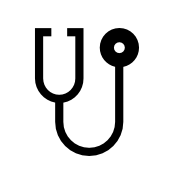4.8: Saturación de oxígeno
- Page ID
- 120200
\( \newcommand{\vecs}[1]{\overset { \scriptstyle \rightharpoonup} {\mathbf{#1}} } \)
\( \newcommand{\vecd}[1]{\overset{-\!-\!\rightharpoonup}{\vphantom{a}\smash {#1}}} \)
\( \newcommand{\id}{\mathrm{id}}\) \( \newcommand{\Span}{\mathrm{span}}\)
( \newcommand{\kernel}{\mathrm{null}\,}\) \( \newcommand{\range}{\mathrm{range}\,}\)
\( \newcommand{\RealPart}{\mathrm{Re}}\) \( \newcommand{\ImaginaryPart}{\mathrm{Im}}\)
\( \newcommand{\Argument}{\mathrm{Arg}}\) \( \newcommand{\norm}[1]{\| #1 \|}\)
\( \newcommand{\inner}[2]{\langle #1, #2 \rangle}\)
\( \newcommand{\Span}{\mathrm{span}}\)
\( \newcommand{\id}{\mathrm{id}}\)
\( \newcommand{\Span}{\mathrm{span}}\)
\( \newcommand{\kernel}{\mathrm{null}\,}\)
\( \newcommand{\range}{\mathrm{range}\,}\)
\( \newcommand{\RealPart}{\mathrm{Re}}\)
\( \newcommand{\ImaginaryPart}{\mathrm{Im}}\)
\( \newcommand{\Argument}{\mathrm{Arg}}\)
\( \newcommand{\norm}[1]{\| #1 \|}\)
\( \newcommand{\inner}[2]{\langle #1, #2 \rangle}\)
\( \newcommand{\Span}{\mathrm{span}}\) \( \newcommand{\AA}{\unicode[.8,0]{x212B}}\)
\( \newcommand{\vectorA}[1]{\vec{#1}} % arrow\)
\( \newcommand{\vectorAt}[1]{\vec{\text{#1}}} % arrow\)
\( \newcommand{\vectorB}[1]{\overset { \scriptstyle \rightharpoonup} {\mathbf{#1}} } \)
\( \newcommand{\vectorC}[1]{\textbf{#1}} \)
\( \newcommand{\vectorD}[1]{\overrightarrow{#1}} \)
\( \newcommand{\vectorDt}[1]{\overrightarrow{\text{#1}}} \)
\( \newcommand{\vectE}[1]{\overset{-\!-\!\rightharpoonup}{\vphantom{a}\smash{\mathbf {#1}}}} \)
\( \newcommand{\vecs}[1]{\overset { \scriptstyle \rightharpoonup} {\mathbf{#1}} } \)
\( \newcommand{\vecd}[1]{\overset{-\!-\!\rightharpoonup}{\vphantom{a}\smash {#1}}} \)
¿Qué es la saturación de oxígeno?
La saturación de oxígeno se refiere al porcentaje de moléculas de hemoglobina saturadas con oxígeno. Las moléculas de hemoglobina pueden transportar cuatro moléculas de oxígeno; el oxígeno se une o se une a las moléculas de hemoglobina. La saturación de oxígeno proporciona información sobre la cantidad de hemoglobina que transporta oxígeno, en comparación con la cantidad de hemoglobina que no transporta oxígeno.
¿Por qué se mide la saturación de oxígeno?
Los proveedores de atención médica miden la saturación de oxígeno porque proporciona información sobre el estado de salud de un cliente. Los tejidos y órganos del cuerpo requieren oxígeno para el metabolismo, y la saturación de oxígeno puede revelar si hay suficiente oxígeno en la sangre o si el cliente se encuentra en un estado llamado hipoxemia (oxígeno insuficiente en la sangre).
Los niveles de saturación de oxígeno pueden influir en las decisiones clínicas sobre si el cliente está recibiendo suficiente oxígeno y/o requiere oxígeno suplementario. Los niveles de saturación de oxígeno también se monitorean durante y después de cirugías y tratamientos y para evaluar la capacidad del cliente para aumentar la actividad.


